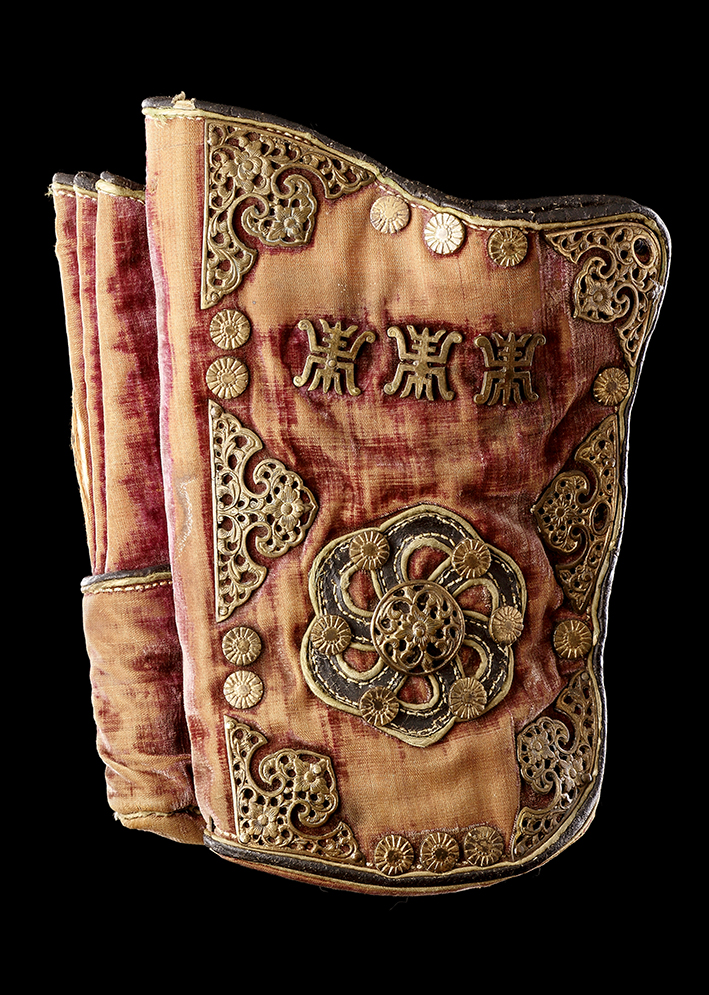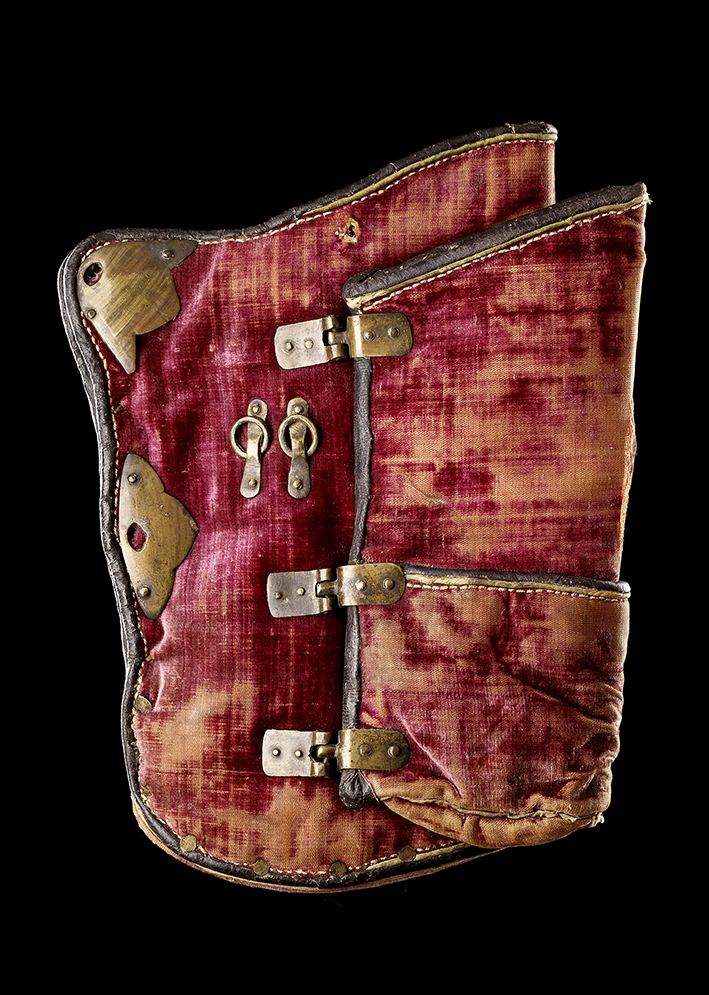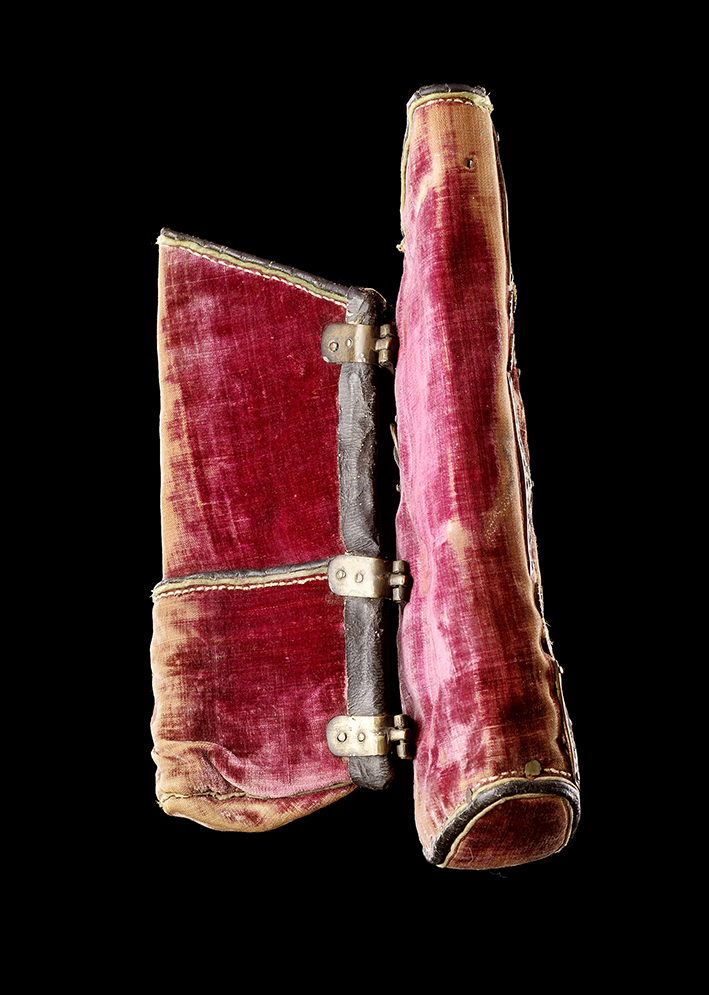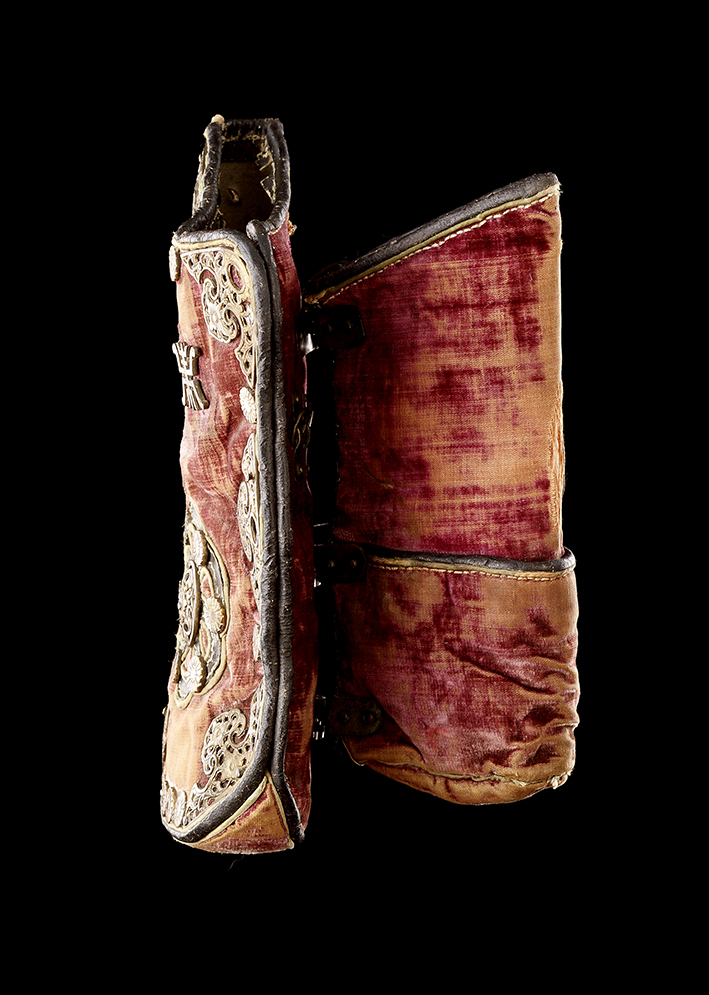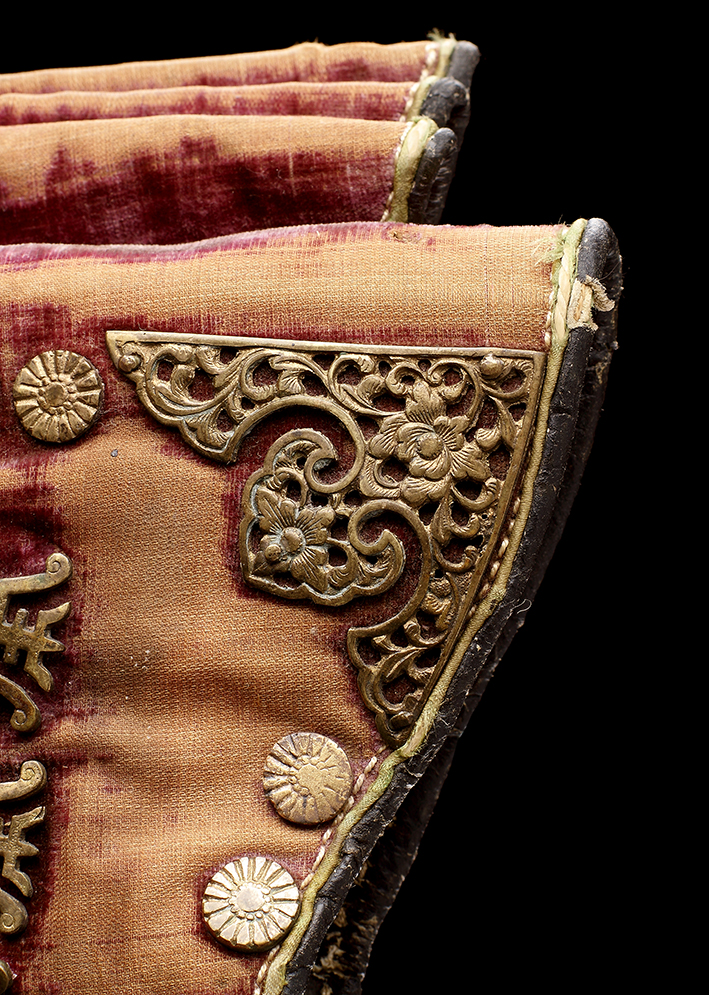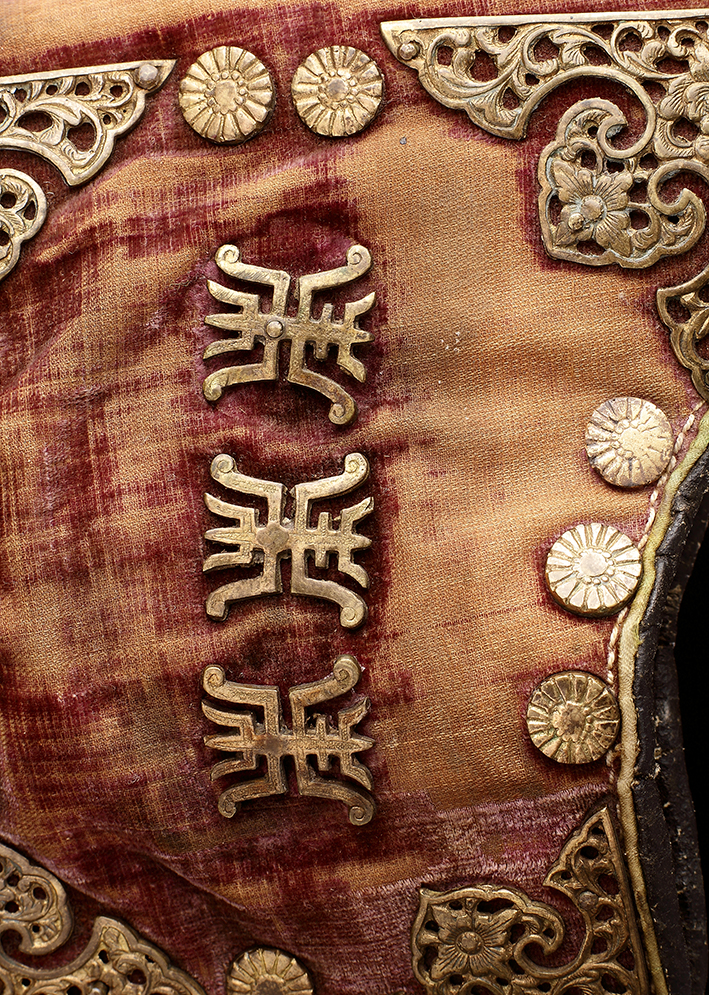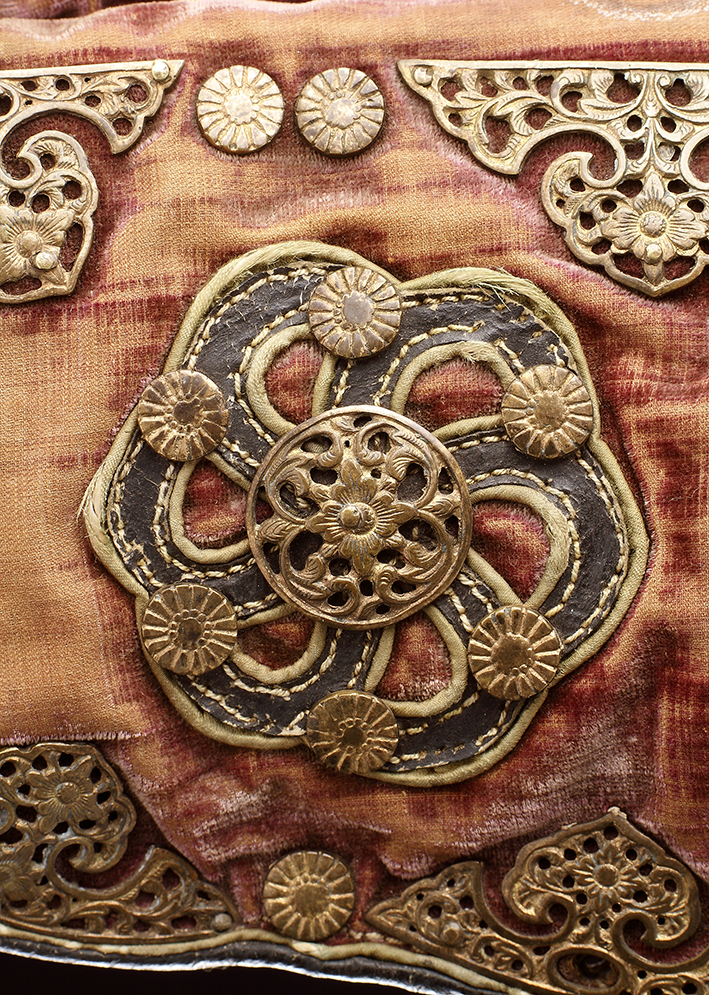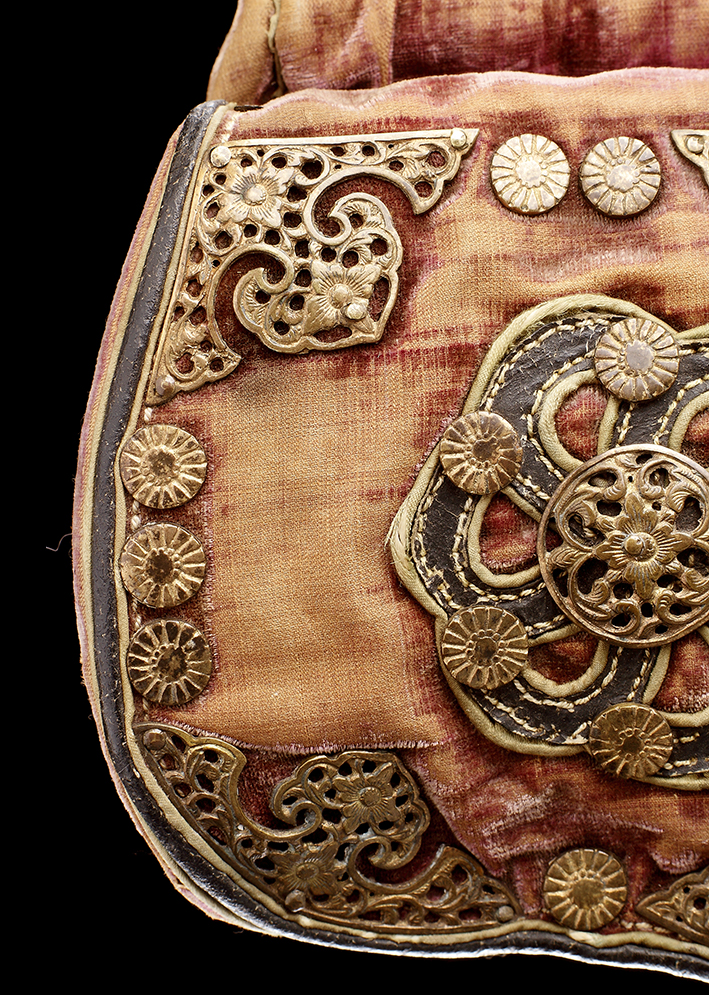Imperial Velvet Quiver
Beijing, China
Early 19th Century (Qing Dynasty)
Overall Height: 266mm (10 inches)
This rare Qing Dynasty Imperial Guard’s quiver is covered in red velvet with applied copper-alloy mounts with traces of gilding. In addition to the main pocket, the quiver has no less than three rear, hinged pockets (an unusual feature compared to the usual two); and another pocket wrapped around the three hinged pockets for quicker draws. These hold extra or special arrows. Three large, stylised Chinese shòu 寿 (longevity) symbols sit prominently on the front in the position where on earlier quivers three slots would be present for the placement of the additional arrows[1].
An important quiver of matching adornment and similar form is in the Brooklyn Museum (acc.no.34.1386a-f) as part of a full costume[2]. The only significant difference between these two quivers is that the textile covering on the Brooklyn Museum’s example is what is known as suozijia— a silk brocade with a pattern of interlocking Ys (in imitation of archaic armour) which is usually reserved for Qing princely ranks only. We also presented a very similar but maroon velvet quiver, complete with arrows to lend the piece context, in our Hong Kong catalogue back in 2017[3].
A beautiful painting of Qinglong Emperor in ceremonial armour and on horseback, dated to 1739 or 1758 and painted by Jesuit missionary Giuseppe Castiglione (1688-1766), gives us context for this type of quiver and the Manchu tradition of its use[4]. The Emperor wears the quiver on his right hip, presumably secured by a belt, with the arrows facing backwards. We can see the quiver, like ours, is wedge shaped, has a main pocket and three small, rear pockets that contain two distinctive arrows with black-and-white fletchings—signifying them to be whistling arrows. The main compartment contains seven arrows with feathers of the spotted argus: a large pheasant native to the jungles of Malaysia. These feathers are described in imperial regulations as phoenix feathers[5].
Provenance
Private European collection
[1] See also URL : https://www.runjeetsingh.com/inventory/279/leather_quiver
[2] See URL: https://www.brooklynmuseum.org/opencollection/objects/38760
[3] See URL: https://www.runjeetsingh.com/inventory/131/qing_imperial_quiver?keywords=quiver
[4] See Rawski and Rawson, China: The Three Emperors, 2005, p.166, fig.65.
[5] See URL : https://debtelin.nl/archery/the-qianlong-emperor-in-ceremonial-armor-on-horseback
